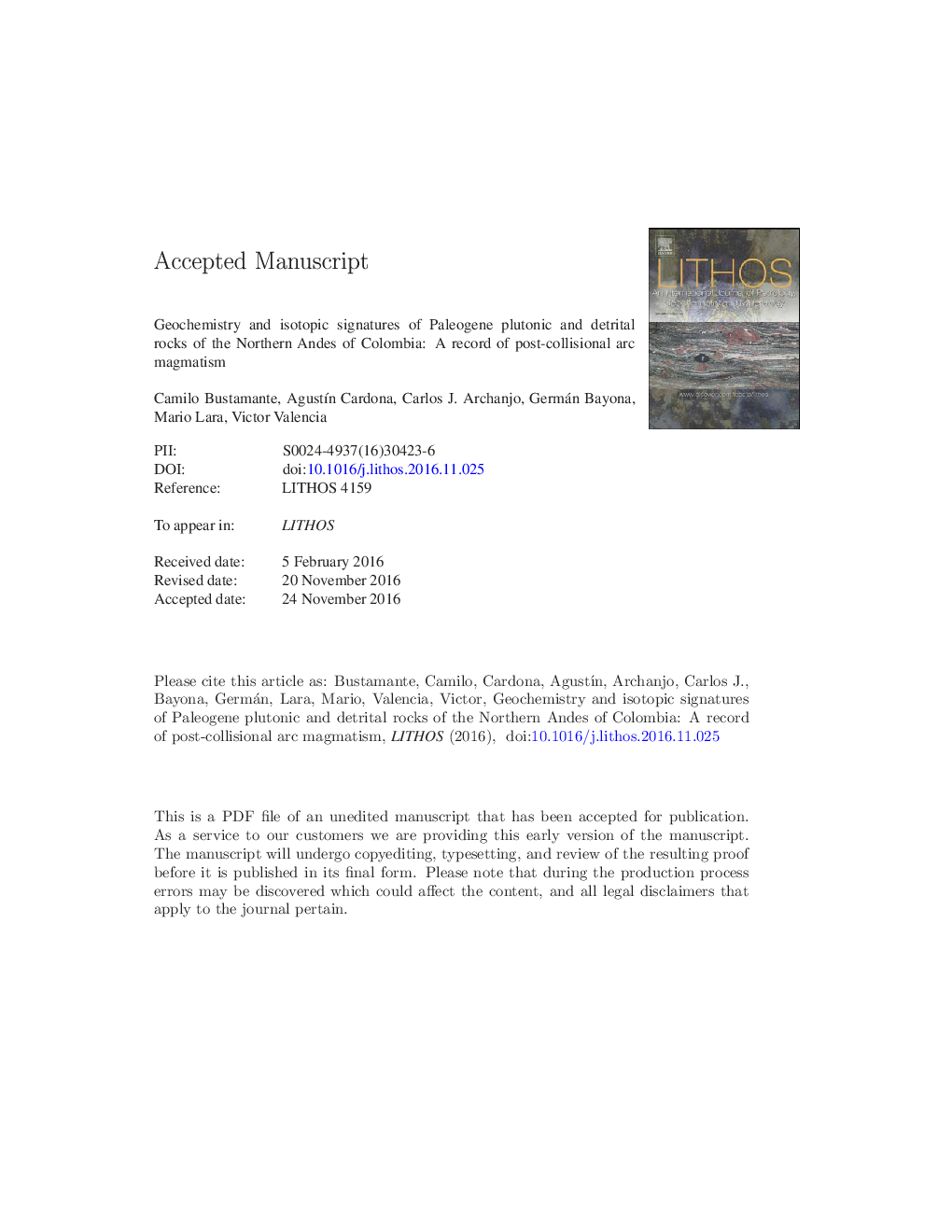| Article ID | Journal | Published Year | Pages | File Type |
|---|---|---|---|---|
| 5784087 | Lithos | 2017 | 54 Pages |
Abstract
Between the Late Cretaceous and Paleogene, the Northern Andes experienced subduction and collision due to the convergence between the oceanic Caribbean Plate and the continental margin of Ecuador and Colombia. Subduction-related calc-alkaline plutonic rocks form stocks of limited areal expression or local batholiths that consist mostly of diorites and granodiorites. We investigated two stocks (Hatillo and Bosque) exposed in the Central Cordillera of Colombia that had U-Pb zircon crystallization ages between 60 and 53 Ma. Relatively low radiogenic Sr, Nd and Pb isotopes from selected samples account for a heterogeneous crustal source, whereas negative anomalies of Nb and Ti, high LREE/HREE and Sr/Y > 28 ratios indicate that the magmas were emplaced in a continental magmatic arc setting. ÆHf(i) values of the dated zircons were between â 4 and + 7 and suggest some contamination of the magmas during their ascent through the crust. The high Sr/Y ratios recorded both in the investigated plutons as well as in other Paleogene plutons in the Central Cordillera suggest that the magmas differentiate in high-pressure conditions (garnet stability field). This differentiation probably occurred at the base of a thickened crust through the Mesozoic subduction and accretion of oceanic arcs to the continental margin during the Lower Cretaceous and Paleocene. The existence of other Paleogene granitoids with evidence of shallower differentiation signatures may be also an inheritance of along strike variations in the Northern Andean continental crust due to Cretaceous to Paleogene oblique convergence. The Hf isotope results from Paleogene detrital zircons from volcanoclastic rocks of the eastern Colombian basins reinforce the possibility of a distal magmatic focus.
Keywords
Related Topics
Physical Sciences and Engineering
Earth and Planetary Sciences
Geochemistry and Petrology
Authors
Camilo Bustamante, AgustÃn Cardona, Carlos J. Archanjo, Germán Bayona, Mario Lara, Victor Valencia,
